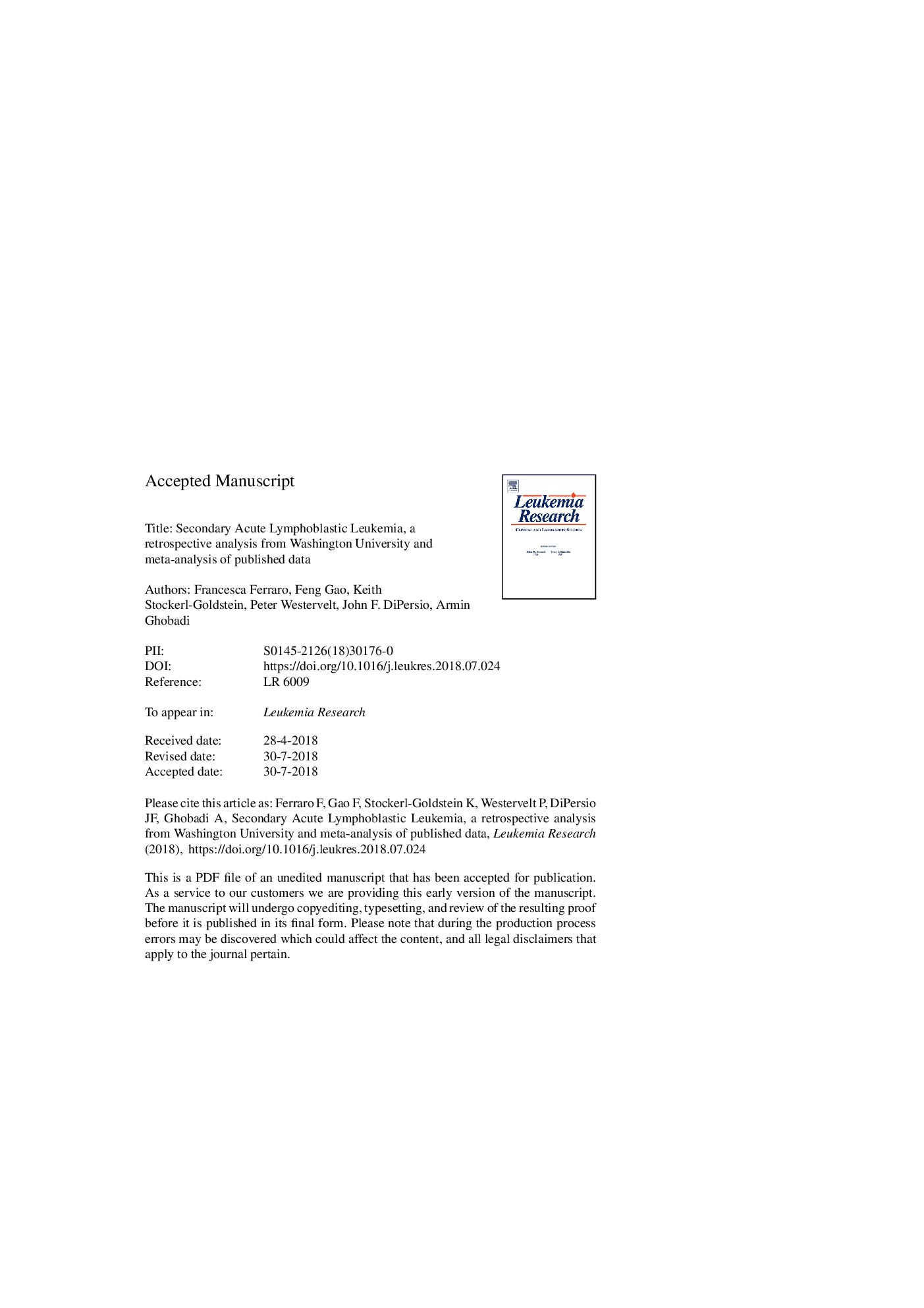| Article ID | Journal | Published Year | Pages | File Type |
|---|---|---|---|---|
| 8453261 | Leukemia Research | 2018 | 23 Pages |
Abstract
Secondary acute lymphoblastic leukemia (s-ALL) is rare and poorly defined and data regarding outcomes post-transplant are lacking. Here, we report a detailed analysis of s-ALL at our Institution. Among 211 eligible patients with ALL from 2006 to 2017, 30 (14%) were defined as s-ALL and the remaining as primary ALL (p-ALL). s-ALL patients were older and had higher incidence of adverse risk factors. Overall response (OR) after induction was not different between s-ALL and p-ALL (79% versus 90% respectively, pâ=â0.106). S-ALL group had a higher risk of relapse (RFS) and death (RFS HRâ=â1.93, 95% CI 1.2-3.12, pâ=â0.007. OS HR: =1.95, 95% CI 1.18-3.23, pâ=â0.01). In multivariate analysis, the adverse effect of s-ALL on RFS and OS was no longer significant, however a pooled meta-analysis of our and published data indicated that s-ALL is an independent risk factor for lower OS (HR: 1.30, 95% CI: 1.11-1.52, pâ<â0.01). Myeloablative allogeneic transplantation in s-ALL was associated with lower rates of relapse and higher transplant related mortality without improvement in OS. These data indicate that s-ALL status should be considered for risk- stratification of newly diagnosed ALL. The optimal conditioning regimen for s-ALL patients undergoing allogeneic stem cell transplantation needs to be evaluated in a larger study.
Keywords
Related Topics
Life Sciences
Biochemistry, Genetics and Molecular Biology
Cancer Research
Authors
Francesca Ferraro, Feng Gao, Keith Stockerl-Goldstein, Peter Westervelt, John F. DiPersio, Armin Ghobadi,
